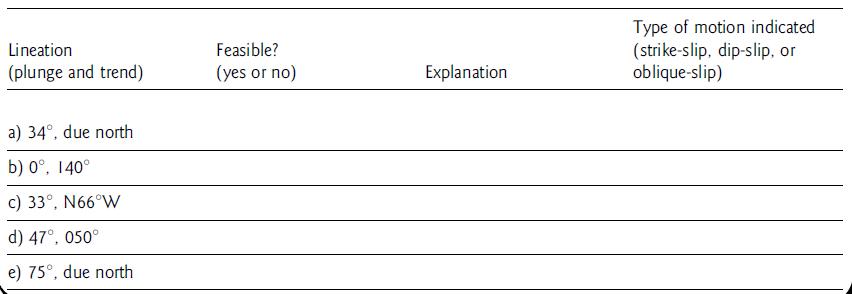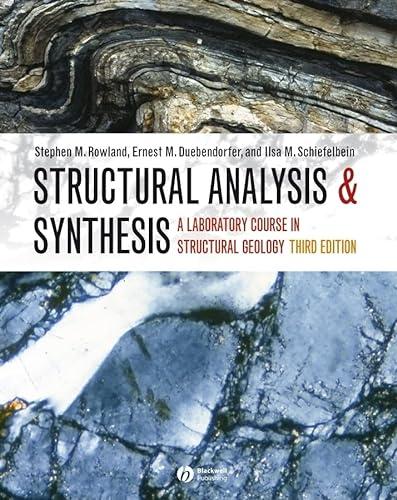Fault surfaces sometimes contain overprinted slip lineations (fault striae). Such slip lineations can be used to determine
Question:
Fault surfaces sometimes contain overprinted slip lineations (fault striae). Such slip lineations can be used to determine the orientation of slip on a fault, and, therefore, whether the motion on the fault was strike-slip, dipslip, or oblique-slip. A geology student who was just learning to use a Brunton compass recorded the orientations of five slip lineations on one fault surface. The strike and dip of the fault surface is 320°, 47°NE. The student’s five recorded lineation orientations are recorded in the table below.
Determine which lineation orientations are feasible and which ones must represent a mistake on the part of the student because the given orientation does not lie within the fault plane. Give a brief explanation for each of your five answers. For the valid lineation orientations, indicate which type of fault motion is indicated.
Step by Step Answer:

Structural Analysis And Synthesis A Laboratory Course In Structural Geology
ISBN: 9781405116527
3rd Edition
Authors: Stephen M. Rowland, Ernest M. Duebendorfer, Ilsa M. Schiefelbein





